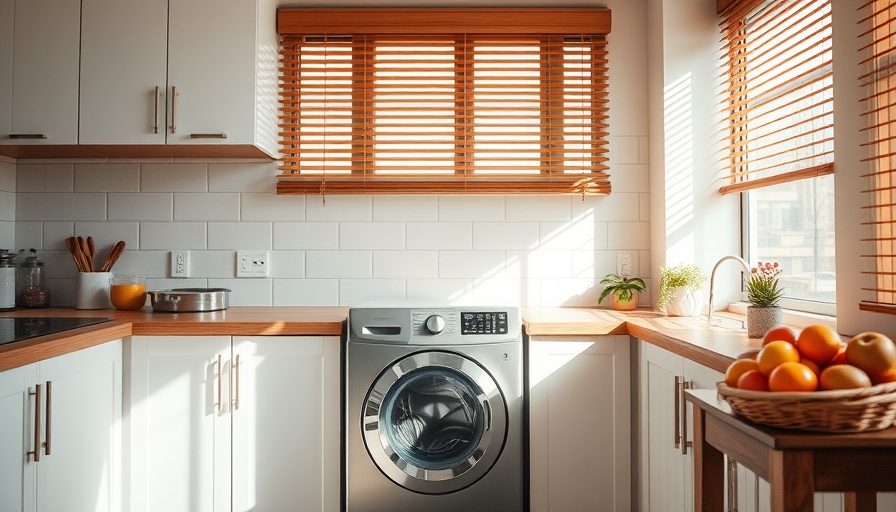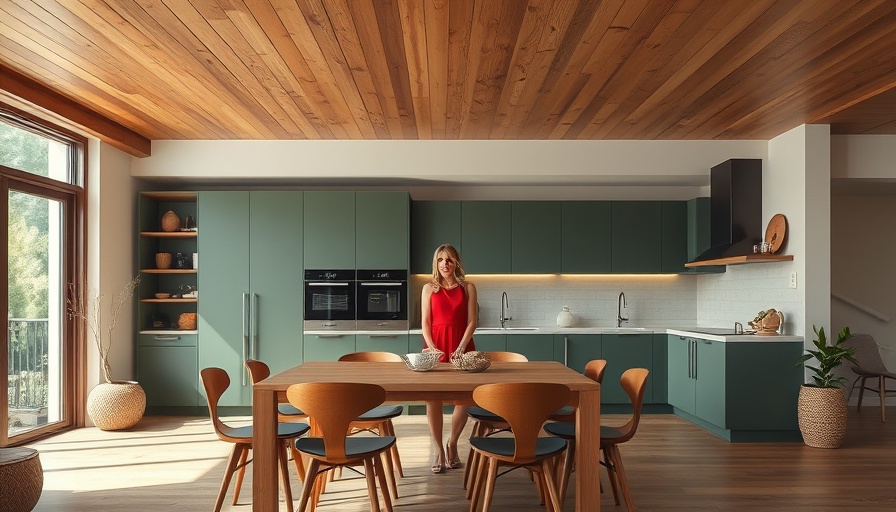
Unpacking the Unconventional: Why Washing Machines Belong in the Kitchen
If you’ve ever visited a British home or tuned in to popular UK shows, you might have been struck by one unique design characteristic: washing machines are often found nestled in the kitchen rather than tucked away in a dedicated laundry room. This intriguing choice reflects a combination of historical factors, space constraints, and evolving environmental consciousness that paints a vivid picture of European living arrangements.
Historical Context: The Legacy of Smaller Homes
To understand the prevalence of washing machines in kitchens across the UK, we must first delve into the architectural history of British homes. Many older properties, particularly terraced and semi-detached houses, were constructed with limited space in mind. These homes often lack basements or utility rooms, leading homeowners to look towards existing spaces, like the kitchen.
When washing machines became mainstream in the mid-20th century, they were incorporated into kitchens because they were already equipped with necessary plumbing and electrical setups. In contrast, bathrooms typically face stringent electrical safety standards that limit their use for major appliances. Hence, the kitchen evolved into a multi-functional space where cooking and laundry coexist.
Modern Kitchen Design: Streamlining with Aesthetics
The design of UK kitchens has also adapted over time to accommodate washing machines efficiently. Unlike American homes, where separate laundry facilities are standard, many British kitchens feature under-counter spaces for appliances like washing machines. This layout allows homeowners to prioritize room functionality without compromising on living space.
Newer homes in the UK often continue this tradition, as builders aim to maximize efficiency while keeping costs low. As a result, modern kitchens frequently reflect a seamless blend of culinary space and laundry functionality, enhancing their value and appeal.
Environmental Awareness: A Cultural Shift in Drying Habits
In addition to space considerations, cultural practices significantly influence the decision to place washing machines in kitchens. European homeowners tend to prioritize environmentally sustainable practices over the convenience of a tumble dryer. Instead of relying on energy-intensive dryers, they often use clotheslines, drying racks, or airing cupboards to dry their laundry.
This penchant for energy-efficient practices reduces the need for expansive laundry rooms, allowing homeowners to make do with compact appliances, such as washer-dryers. This cultural habit promotes environmental stewardship, aligning with broader sustainability efforts within the community.
Comparative Perspectives: The United States vs. the UK
For many Americans, the layout of British homes can feel foreign due to the stark contrast in space offerings. While U.S. homes commonly feature dedicated laundry rooms, with washing machines and dryers housed separately, UK homes must adapt to smaller dimensions. These variations highlight notable tendencies in how different cultures navigate residential layouts based on their historical, geographical, and socioeconomic contexts.
Ultimately, this comparison emphasizes that each country's approach to laundry reflects its unique relationship with space usage, practicality, and sustainability.
The Future of Laundry: Innovations and Adaptations
As society becomes increasingly aware of environmental issues, the trend of incorporating washing machines into kitchens is likely to persist. Innovations in appliance design are continually emerging, with manufacturers developing efficient washer-dryers that meet the needs of modern homeowners without sacrificing space.
California homeowners, for instance, have already begun embracing compact solutions that reflect these trends. With the push toward sustainable living, the seamless integration of laundry and kitchen spaces may offer a forward-looking solution for urban and suburban dwellers alike.
Actionable Insights: Making the Best of Your Space
For those who may want to rethink their home design, recognizing the value in a multi-functional kitchen could lead to smarter living solutions. Consider evaluating your existing kitchen space to create an efficient and aesthetically pleasing environment that accommodates both cooking and laundry tasks.
By embracing a more compact and versatile design, not only can you enhance the functionality of your home, but you can also actively participate in sustainability efforts that lower energy consumption and contribute positively to the environment.
 Add Row
Add Row  Add
Add 




Write A Comment